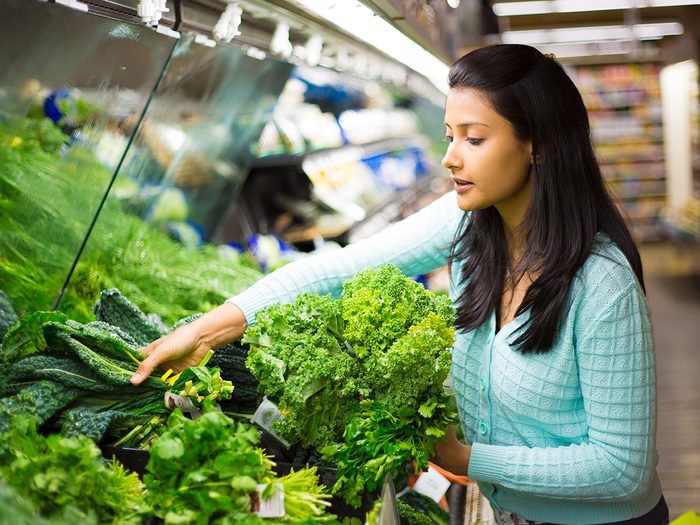
Leafy greens can help lower blood pressure
Many leafy greens, including everything arugula and kale to spinach and collard greens, contain potassium and magnesium which are key minerals to control blood pressure, according to Harvard Medical School. These nutrients are an important part of the DASH diet (Dietary Approaches to Stop Hypertension, or high blood pressure), which suggests a variety of foods that lower blood pressure. A potassium-rich diet helps the body become more efficient at flushing out excess sodium, which can raise blood pressure, and magnesium helps promote healthy blood flow, according to nutritionist Joy Bauer.
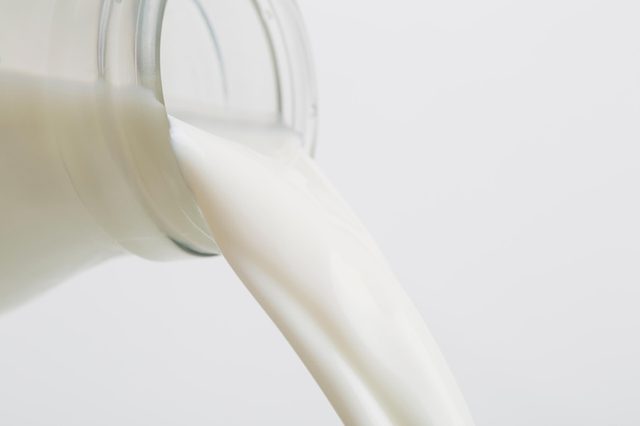
Skim milk
A cold glass of milk offers a solid serving of both calcium and vitamin D, nutrients that work as a team to help lower blood pressure by 3 to 10 per cent, according to Bauer’s website. Those numbers may not sound impressive, but they could translate to a 15 per cent reduction in heart disease risk, she adds. Several studies indicate that higher dietary intake of calcium is associated with lower systolic and diastolic blood pressure, according to the Linus Pauling Institute at Oregon State University.
Learn the risk factors for heart disease—and how to control them.
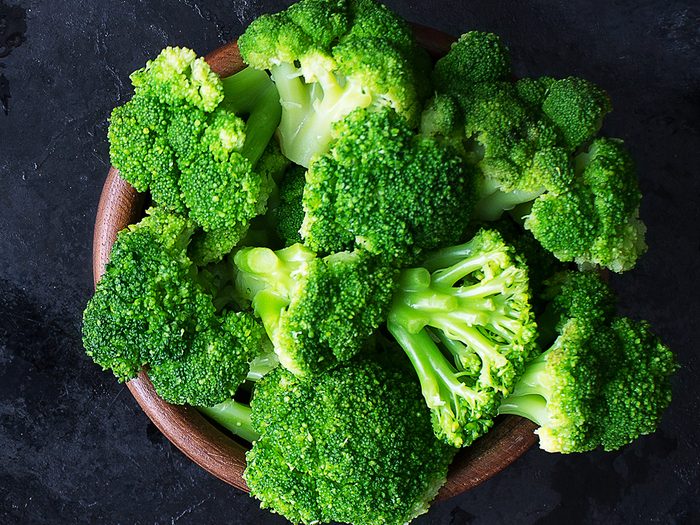
Broccoli
This cruciferous veggie is a good source of the blood pressure-regulating minerals magnesium, calcium and potassium. (These are the 13 essential vitamins your body needs to stay healthy.) In fact, high amounts of those three minerals is common among foods that lower blood pressure. A study in ISRN Pharmacology was the first to link sulforaphane, the main active ingredient in cruciferous vegetables (including broccoli and cauliflower), with a specific metabolic pathway that leads to a reduction in blood pressure. In addition, broccoli sprouts are high in compounds that may help reduce damage to arteries, which may play a role in high blood pressure.
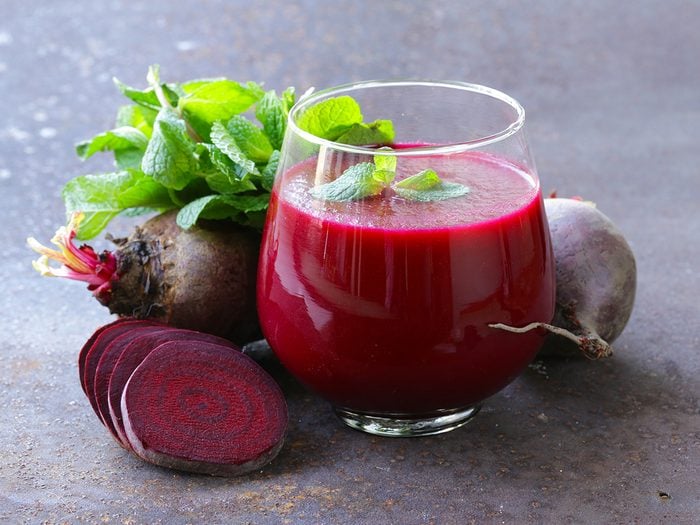
Beet juice
People with high blood pressure who drank about eight ounces of beetroot juice experienced a decrease in blood pressure of about 10 mm Hg, according to a study published in April 2013 in the American Heart Association journal Hypertension. The magic ingredient? Nitrate, which turns into nitric oxide, a gas that widens blood vessels and aids blood flow. Beets are also packed with several other essential nutrients like calcium, iron, and potassium so they are good for your heart, digestion, and overall health.
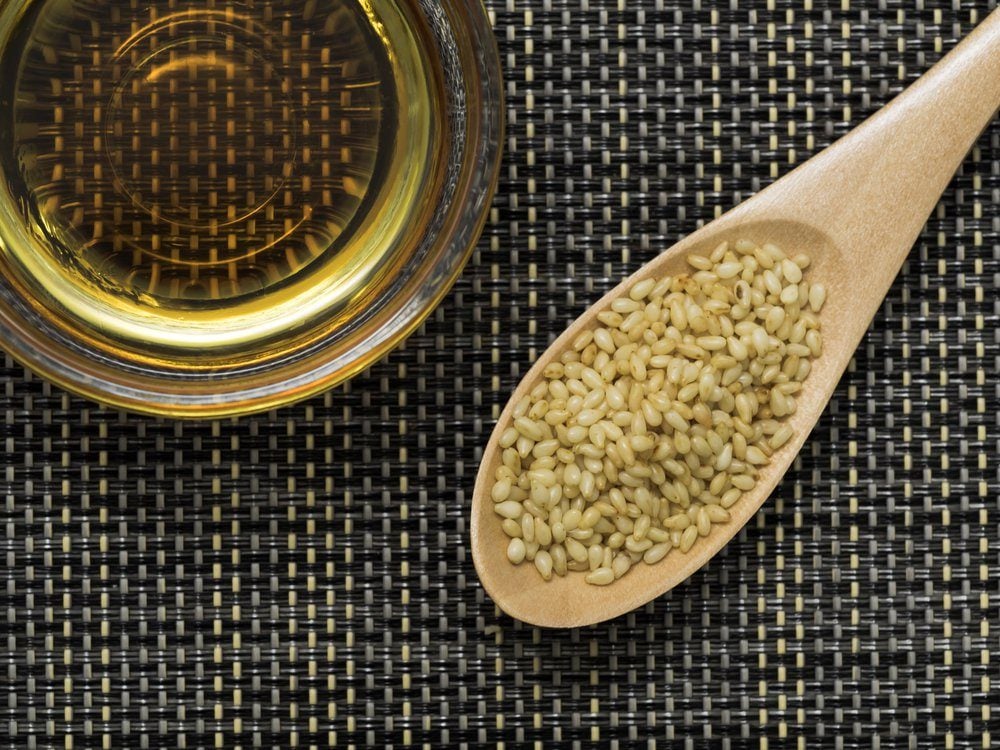
Sesame and rice-bran oils
In a study published in the Journal of Clinical Lipidology, cooking with a blend of sesame oil and rice bran oils (available at health food stores) was found to lower blood pressure in patients with mild to moderate hypertension. Researchers believe the effect is due to the oils’ fatty acids and antioxidants such as sesamin, sesamol, sesamolin, and oryzanol.
These are the healthiest oils for cooking, according to nutrition experts.
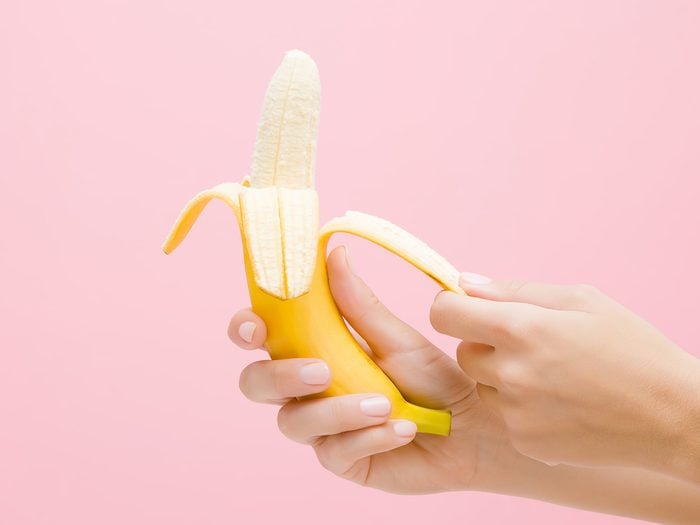
Bananas
Again, foods that lower blood pressure are usually high in potassium and similar nutrients. Many people recognize bananas as a rich source of potassium—and that’s accurate, given that each banana contains about 420 milligrams or 11 per cent of the 4,700 milligrams the American Heart Association recommends that people consume daily. Surprisingly, however, many vegetables are actually higher in potassium than these popular fruits. A cup of Swiss chard boasts 960 milligrams, a cup of cooked white beans contains nearly 1,200 milligrams, and a whole avocado has 975 milligrams.

Dark chocolate
Foods that lower blood pressure and taste great? Dark chocolate is at the top of the list. This bittersweet food is rich in antioxidants called flavanols, which make blood vessels more elastic and have been shown in numerous studies to lower blood pressure and improve blood flow to the heart. Also helpful: Combine it with almonds. A study in the Journal of the American Heart Association found that the two together may reduce the risk of heart disease. Stick to an ounce of dark chocolate per day, and make sure it contains at least 70 per cent cocoa.
Find out 14 more foods you need to stop demonizing.
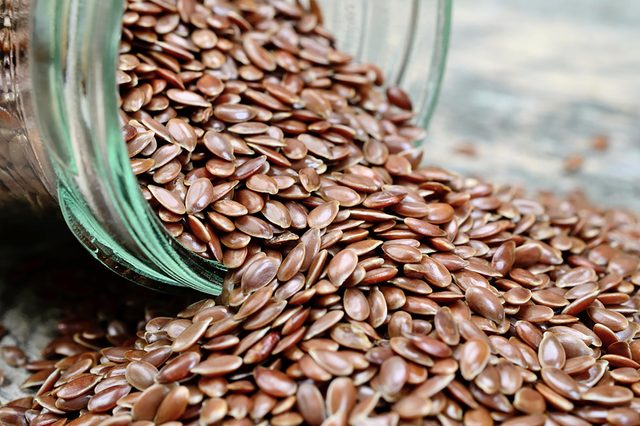
Flaxseed
Sprinkling ground flaxseed over your meals can make a big impact on your blood pressure readings. In a study published in the journal Hypertension, participants with high blood pressure and peripheral artery disease ate 30 grams (about an ounce) of milled flaxseed daily. After six months, their systolic blood pressure (the top number) decreased by 15 mm Hg, on average, and their diastolic blood pressure (the bottom number) dropped by 7 mm Hg.
Find out more health high fibre foods worth adding to your cart.
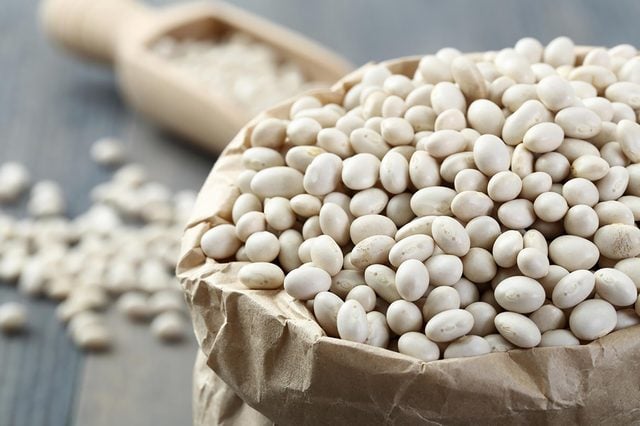
White beans
To lower blood pressure, it helps to eat foods high in at least two of these three minerals: calcium, magnesium, and potassium. With white beans, you hit the jackpot for all three. One cup contains 13 per cent of your daily recommended calcium, 30 per cent of your daily magnesium, and 24 per cent of your daily recommended potassium. The benefits are clear: A review of studies in the American Journal of Hypertension found that dietary pulses (the dry seeds of plants such as beans, peas, and chickpeas) lowered blood pressure in people with and without hypertension.
Find out 25 ways salt is making you sick.
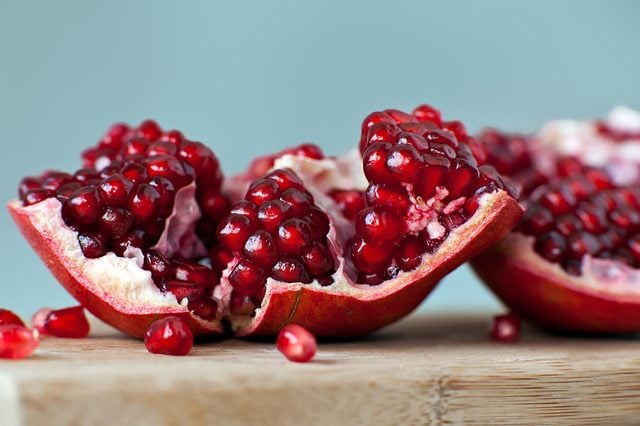
Pomegranates
A review of studies in Pharmacology Research found that drinking pomegranate juice reduced both systolic and diastolic blood pressure. “This evidence suggests it may be prudent to include this fruit juice in a heart-healthy diet,” the researchers concluded. So you may want to start swapping your morning orange juice for one-and-a-half cups of this heart-healthy alternative.
Check out 50 of the best foods for your heart.
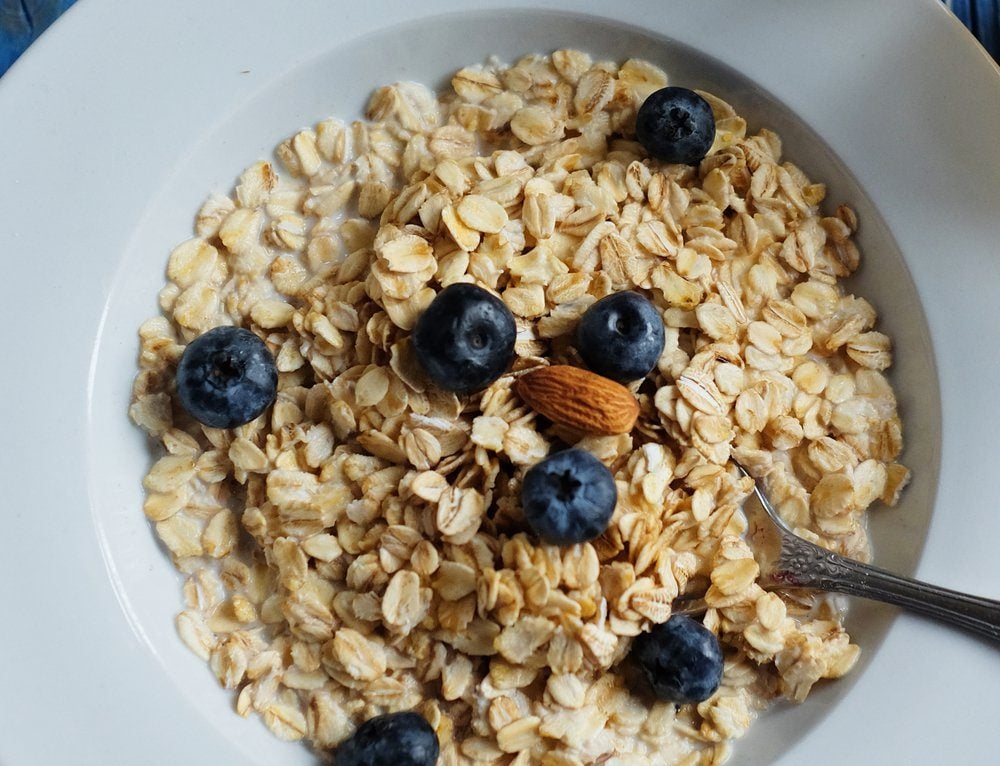
Oatmeal
A wide body of research has shown that eating oatmeal can lower systolic and diastolic blood pressure. One study published in the European Journal of Clinical Nutrition found that eating beta-glucan (a special fibre found in oats) every day lowered blood pressure in men and women who had elevated blood pressure. Another found that daily consumption of 5.5 g of beta-glucan from oats for six weeks reduced systolic and diastolic blood pressure by 7.5 and 5.5 points in people who had mild or borderline hypertension. Plus, the fibre can help you maintain a healthy body weight and prevent obesity, a risk factor for high blood pressure.
Brush up on more surprising health benefits of oatmeal.
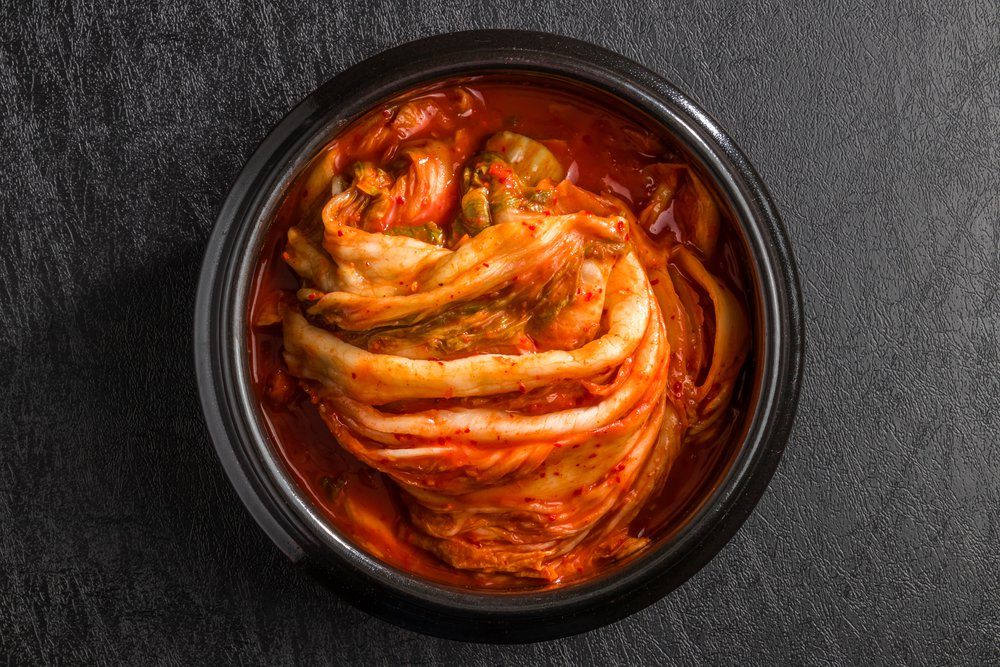
Fermented foods
Eating probiotic-rich foods can have a modest effect on lowering blood pressure, according to a review of nine studies published in Hypertension. The study participants who saw a positive impact on their blood pressure consumed multiple species of probiotic bacteria regularly for more than eight weeks. To boost your probiotic intake, try adding kimchi, kombucha, tempeh, and miso to your diet. Bear in mind, though, that fermented foods such as these may be heavy on the salt. There’s a chance that eating these foods could backfire and send your blood pressure higher.
Here’s more expert advice on how to improve gut health.
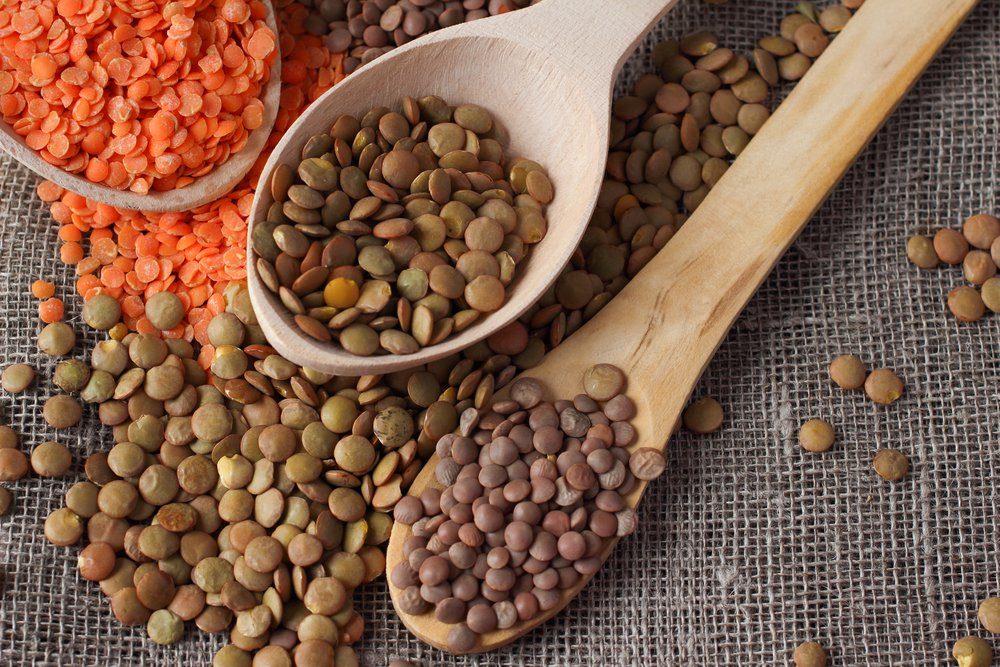
Lentils
Lentils are are a great source of protein and fibre. They are also foods that can lower blood pressure. That’s thanks to potassium—100 grams of split red lentils have more potassium than a banana. In addition, dietary pulses (which include lentils) have been found to lower blood pressure, according to the earlier-mentioned study in the American Journal of Hypertension.
Discover the sneaky things that can affect your blood pressure reading.
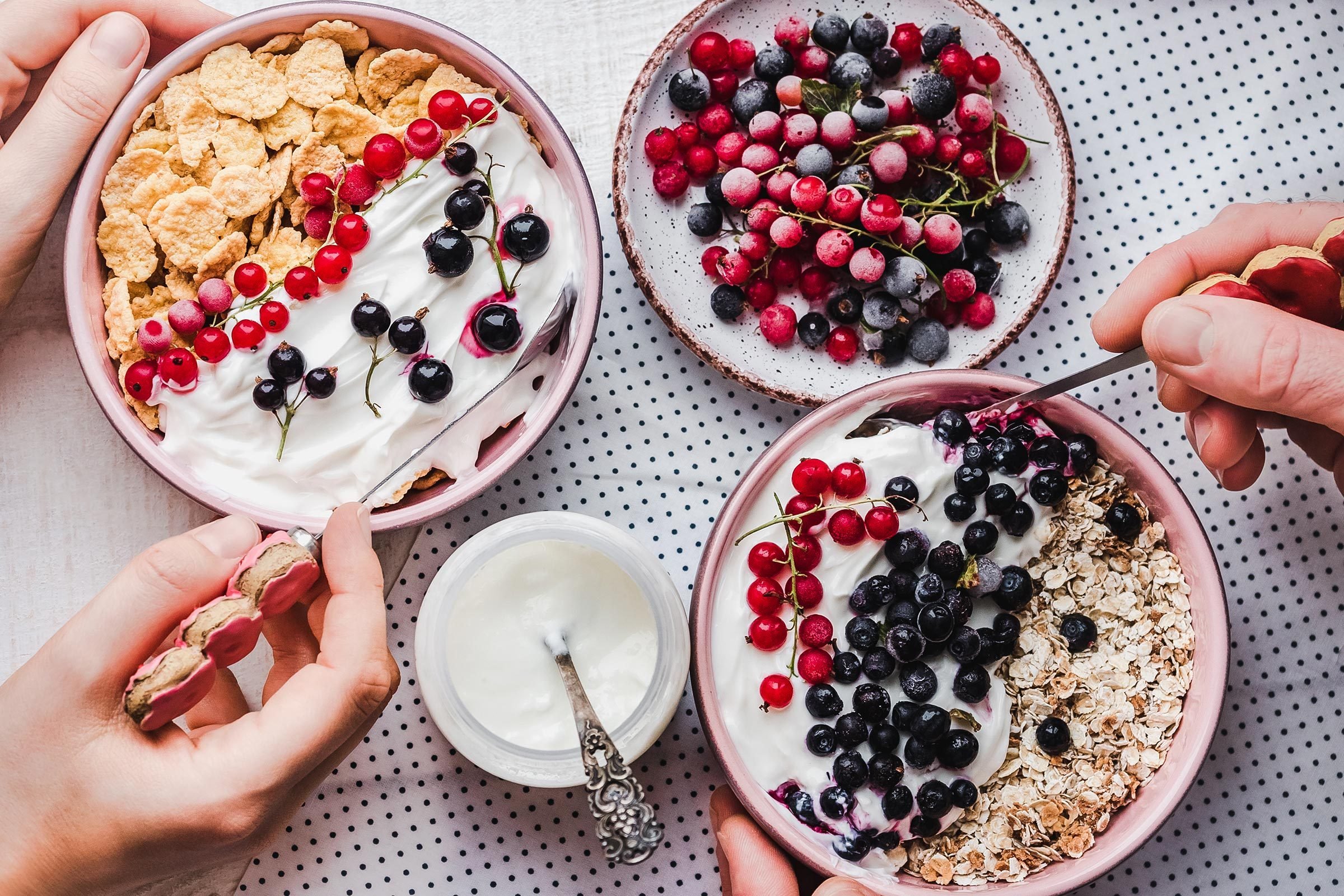
Yogurt
If you’re not a fan of skim milk, yogurt could be a great alternative to fulfill your daily dairy needs and help prevent or lower high blood pressure. According to the American Heart Association, women who ate five or more servings of yogurt a week experienced a 20 per cent reduction in their risk for developing high blood pressure. Dairy also contains calcium, which is essential for healthy blood pressure since the mineral helps blood vessels tighten and relax when necessary, according to Harvard Medical School.
Here are 50 heart health tips cardiologists want you to know.
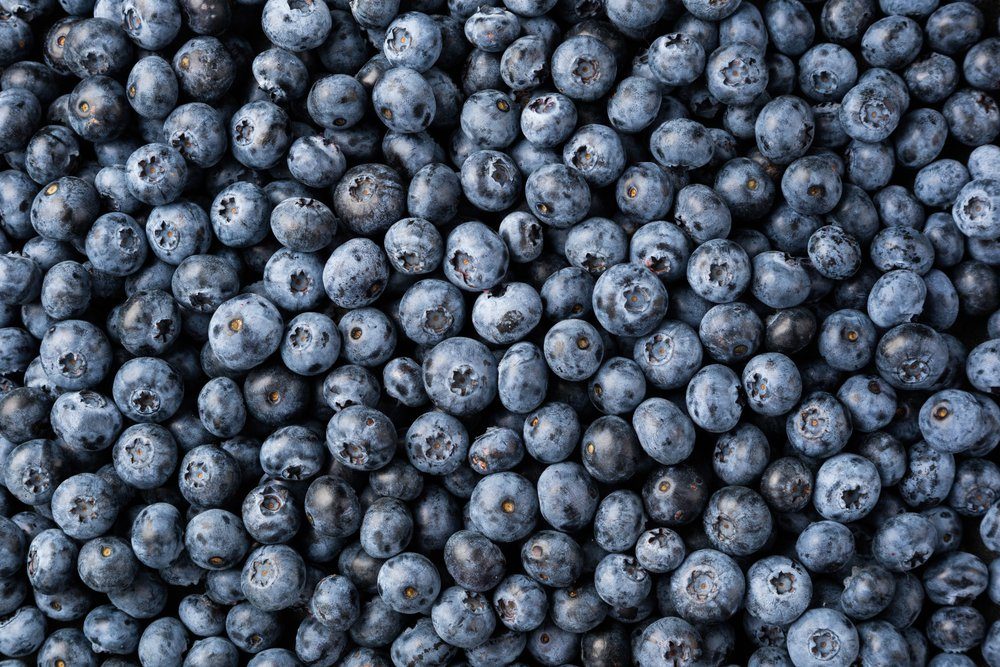
Berries
Flavonoids have been linked to lower blood pressure and hypertension. That’s why blueberries, blackberries, and other berries are good to have on hand to add to oatmeal, yogurt, or smoothies. One study found that people with hypertension who had the highest intake of antioxidants from berries reduced their risk of high blood pressure by 8 per cent.
Check out more facts about wild blueberries most people don’t know.
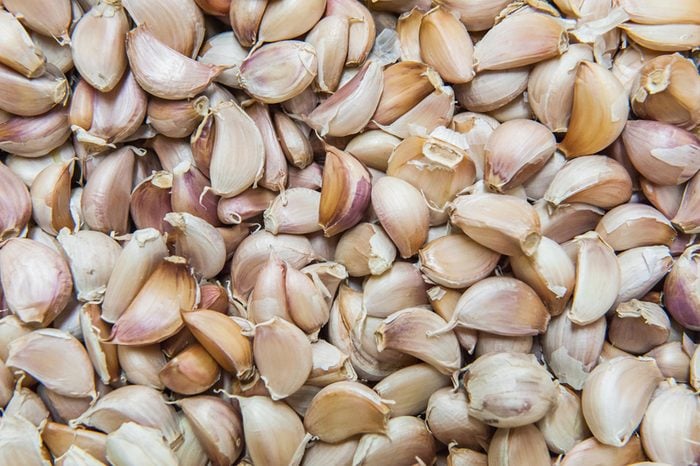
Garlic and herbs
Is there anything garlic can’t do? The vegetable is praised in natural medicine, is linked to lowering cholesterol, and is one of the foods that can lower blood pressure. A study in the journal Integrated Blood Pressure Control suggests that garlic reduced blood pressure by an amount similar to that achieved with standard blood pressure medications.
Here’s how to reverse heart disease.
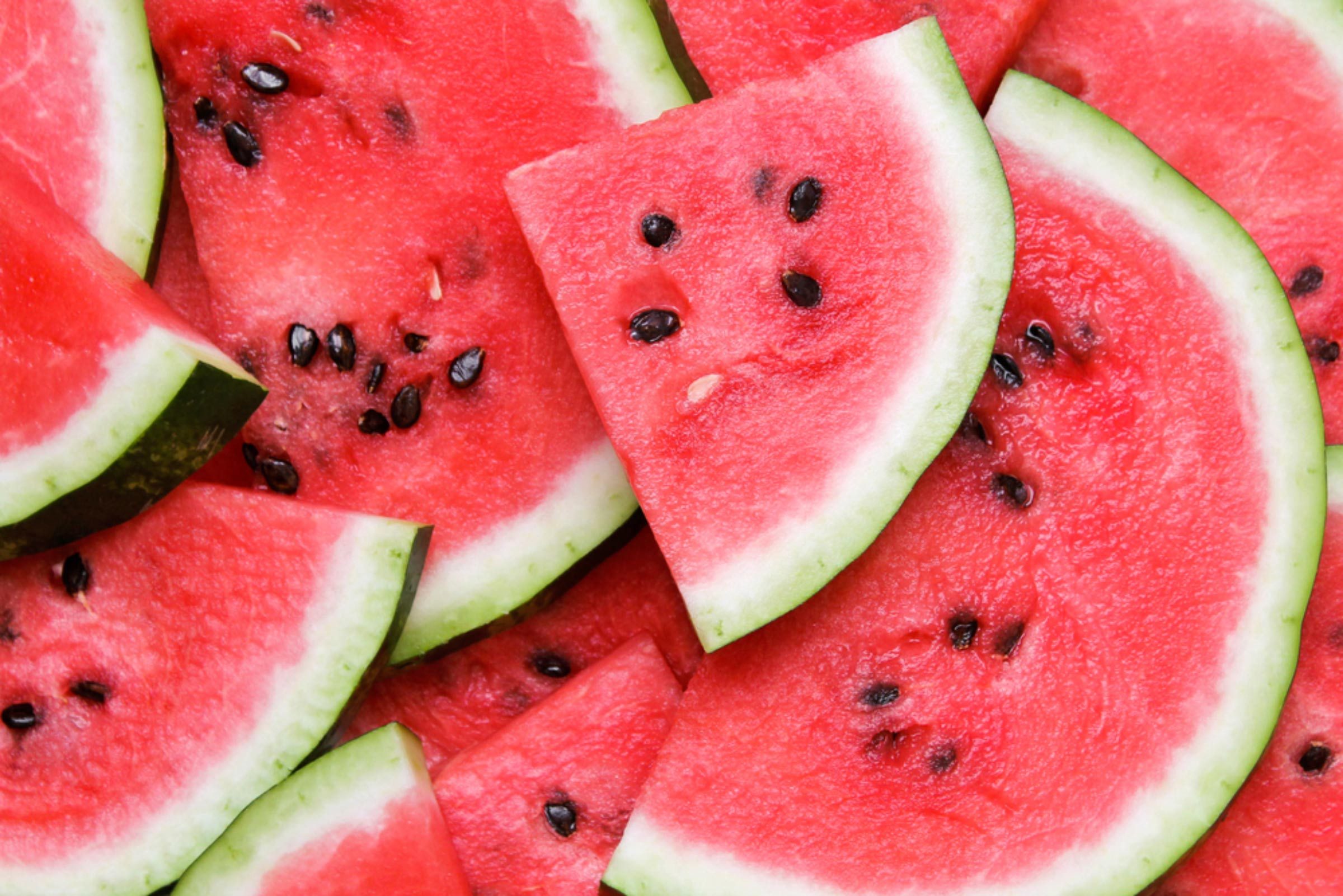
Watermelon
Some research on watermelon extract and high blood pressure suggests the amino acid citrulline found in the fruit may help manage high blood pressure. One study, in the American Journal of Hypertension, found those who took watermelon extract showed reduced blood pressure specifically in the ankles and arm arteries. Another found that watermelon reduced blood pressure in overweight individuals both at rest and while under stress.
Find out the healthiest fruits you can eat.
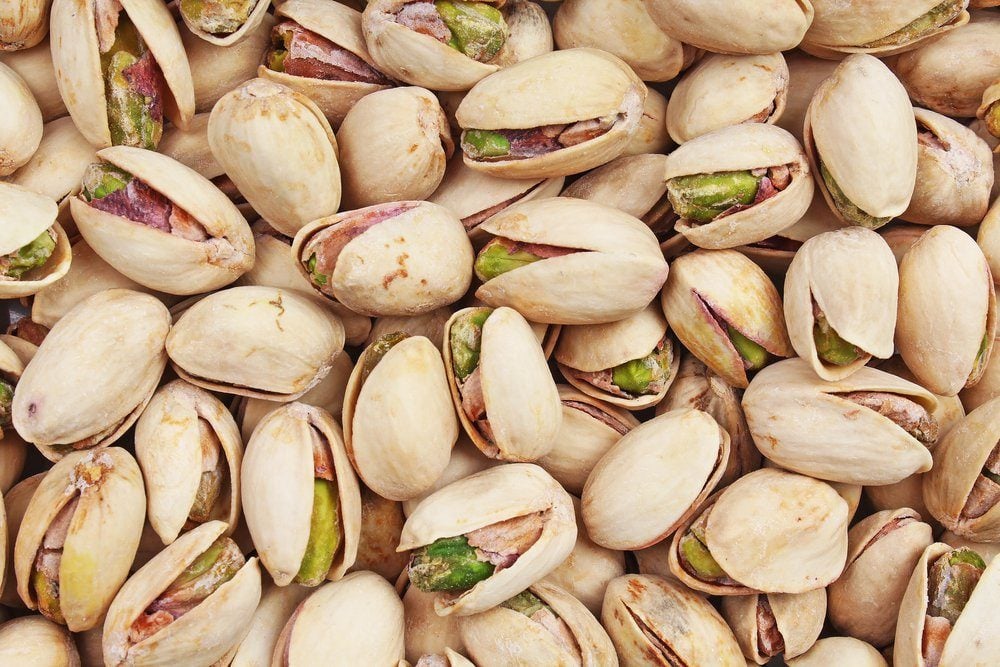
Pistachios
As little as one serving of pistachios a day could reduce blood pressure, according to research published in Hypertension. Another study in the same journal also found that the nut may lower blood pressure during stressful times thanks to its effect on blood vessel tightening and heart rate.
Learn how to spot the heart attack symptoms that are frequently misdiagnosed.
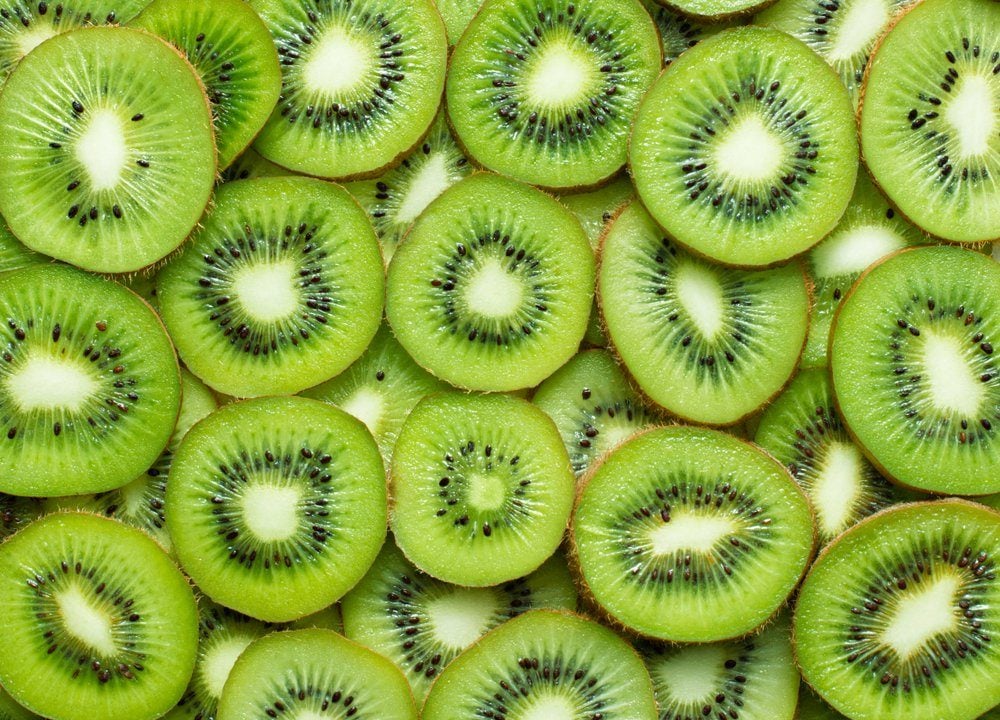
Kiwis
Kiwis are another one of the foods that lower blood pressure. In one study, researchers examined how the fruit fares compared to apples. They found that eating three kiwis a day over eight weeks reduced blood pressure in people with slightly high blood pressure more so than eating one apple per day during the same time. A daily serving of kiwi was also found to reduce blood pressure in people with only mildly elevated levels. Kiwis are also an excellent source of vitamin C which can also improve blood pressure.
Find out how to improve heart health in six easy steps.
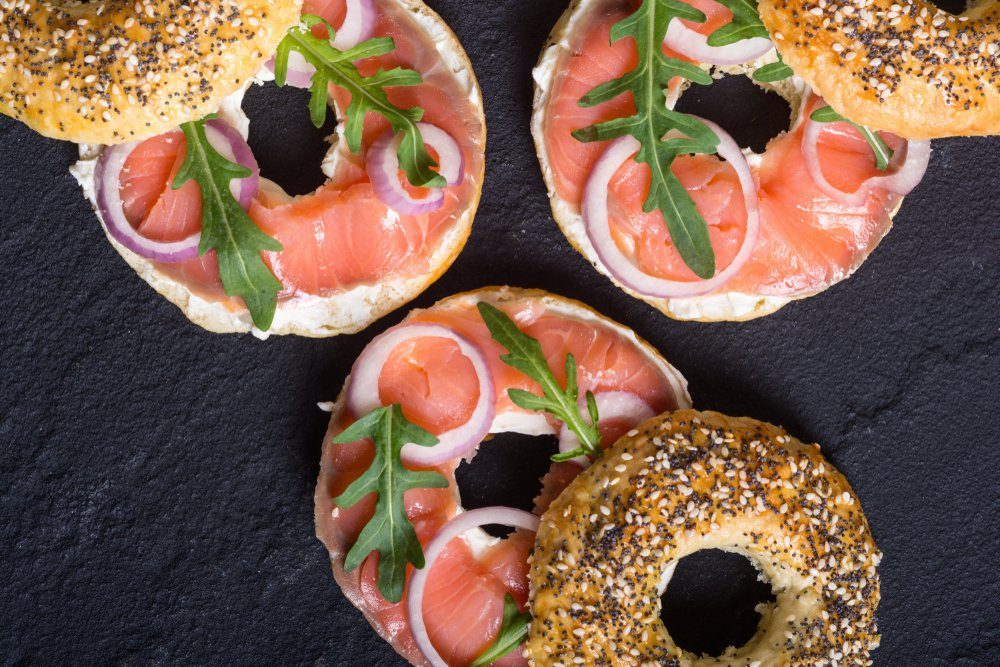
Salmon and fish with omega-3s
An extensive body of research—including a meta-analysis of 70 randomized controlled trials—shows that consuming fish that has a high omega-3 content can help lower blood pressure. Fatty fish, such as salmon, lake trout, mackerel, herring, sardines, and tuna, contain the most omega-3 fatty acids and therefore offer the most benefit. The American Heart Association recommends eating fatty fish at least twice per week.
This is the healthiest fish you can eat.
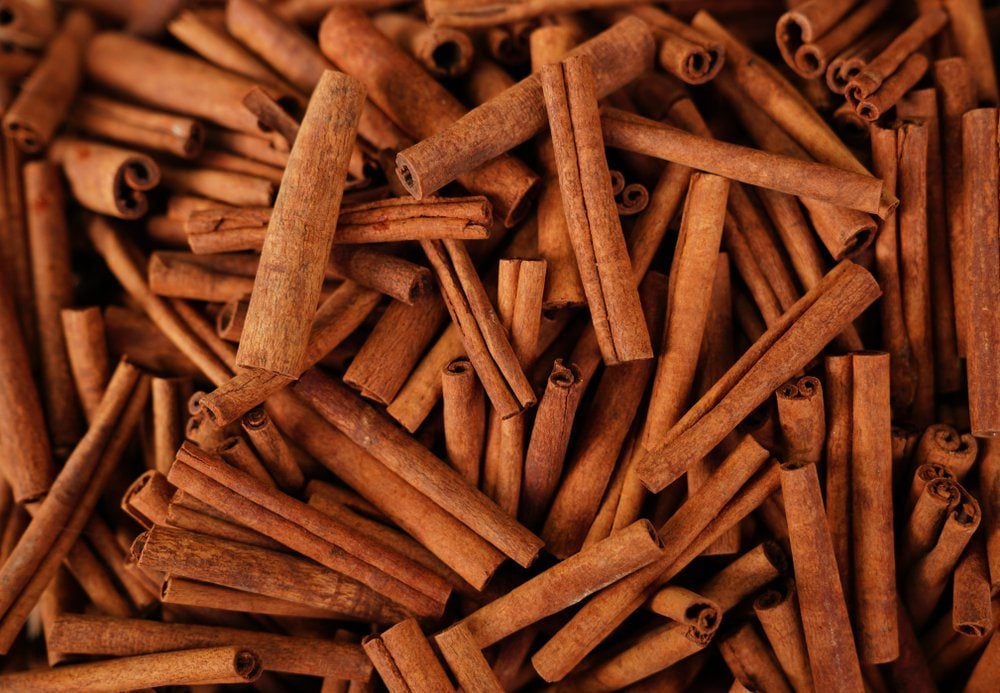
Cinnamon
This spice could lower blood pressure in the short term, according to an analysis of three studies published in the journal Nutrition. The researchers emphasize that it’s premature to conclude that this also indicates long-term effects, due to the limited number of studies conducted on cinnamon. But in the meantime, try a dash of cinnamon on your oatmeal or over fruit.
Here are more surprising health benefits of cinnamon.
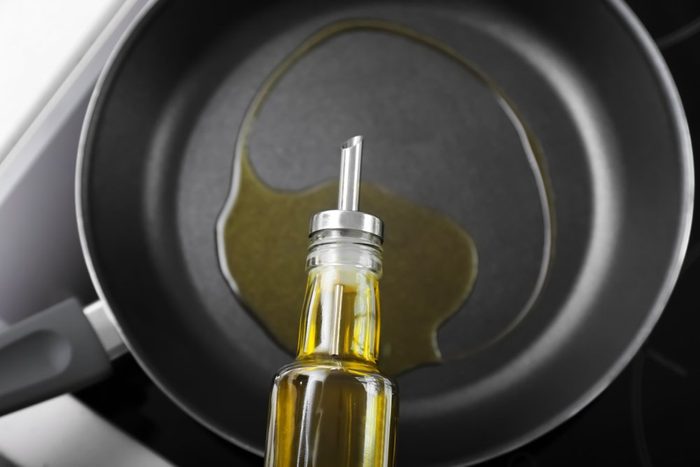
Olive oil
Add olive oil to your blood pressure shopping list. The main reason for this benefit is because of polyphenols. These compounds are known for fighting inflammation and reducing blood pressure, according to UCDavis. That’s why olive oil is a key part of the DASH diet and one of the foods that lower blood pressure.
Next, discover 17 natural remedies for high blood pressure.